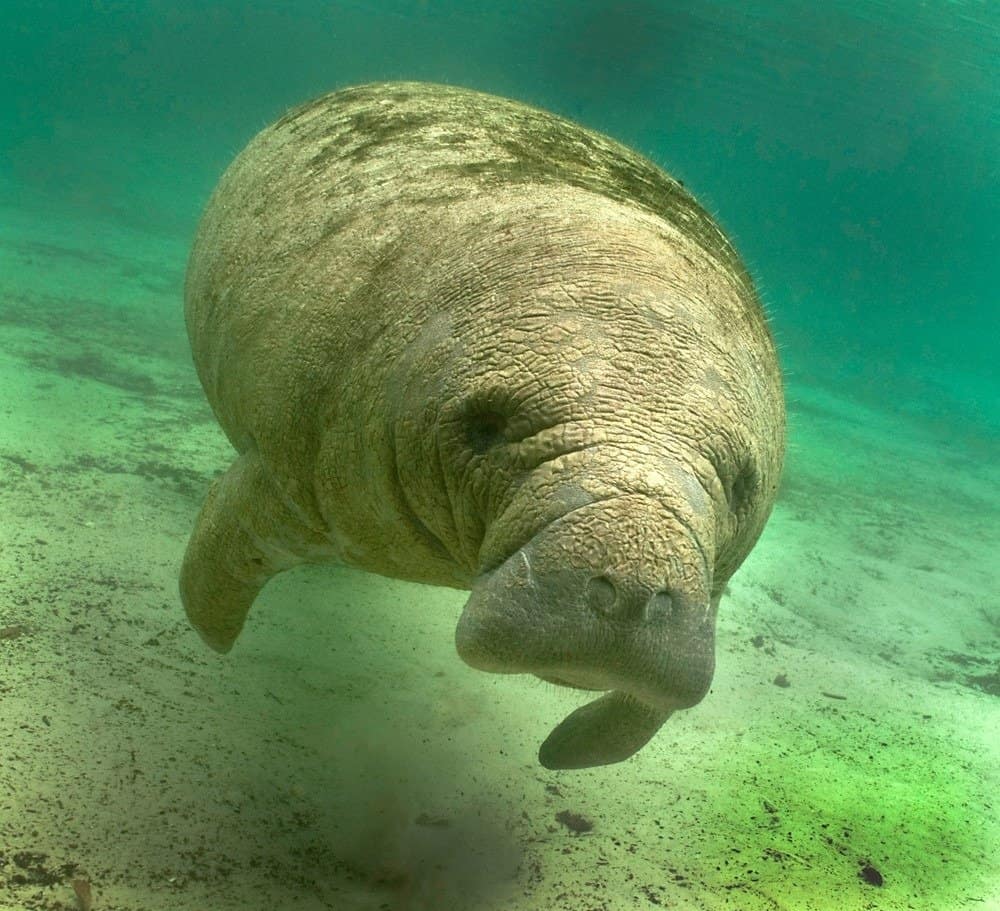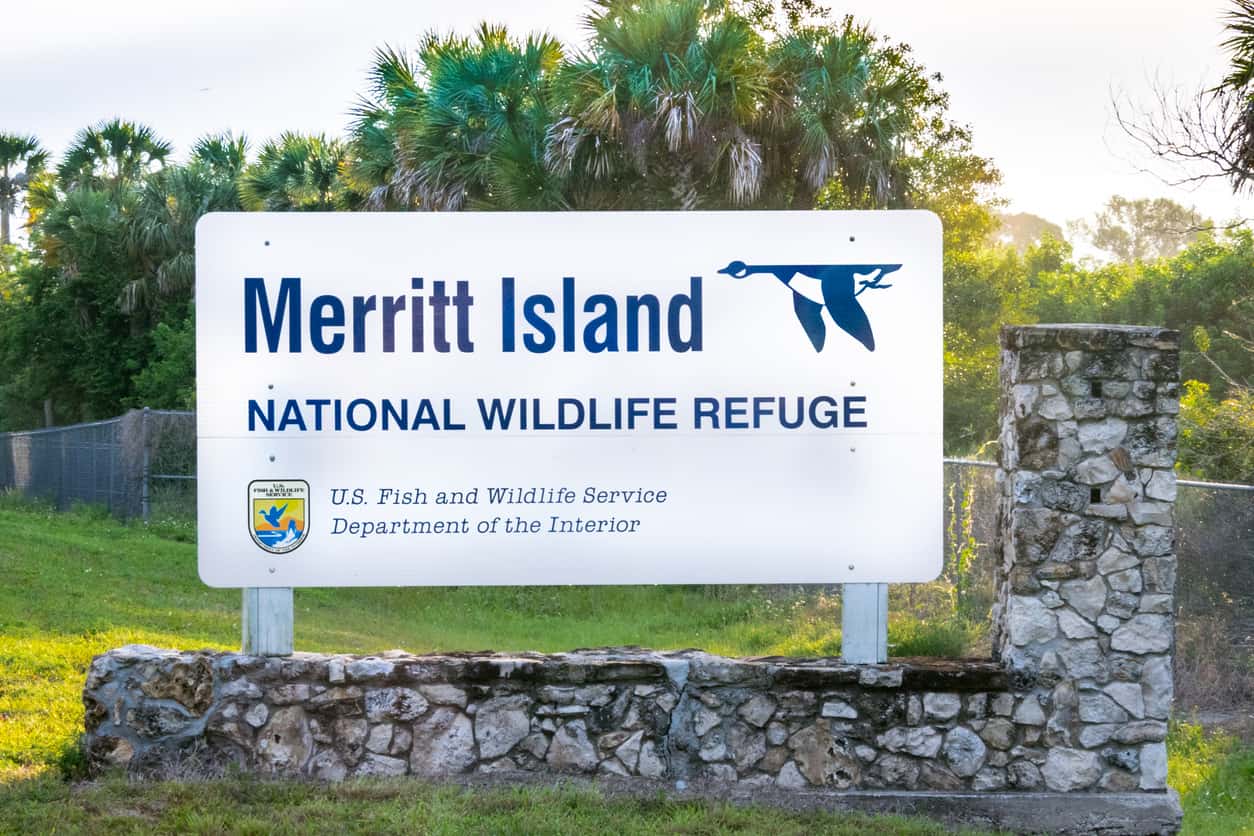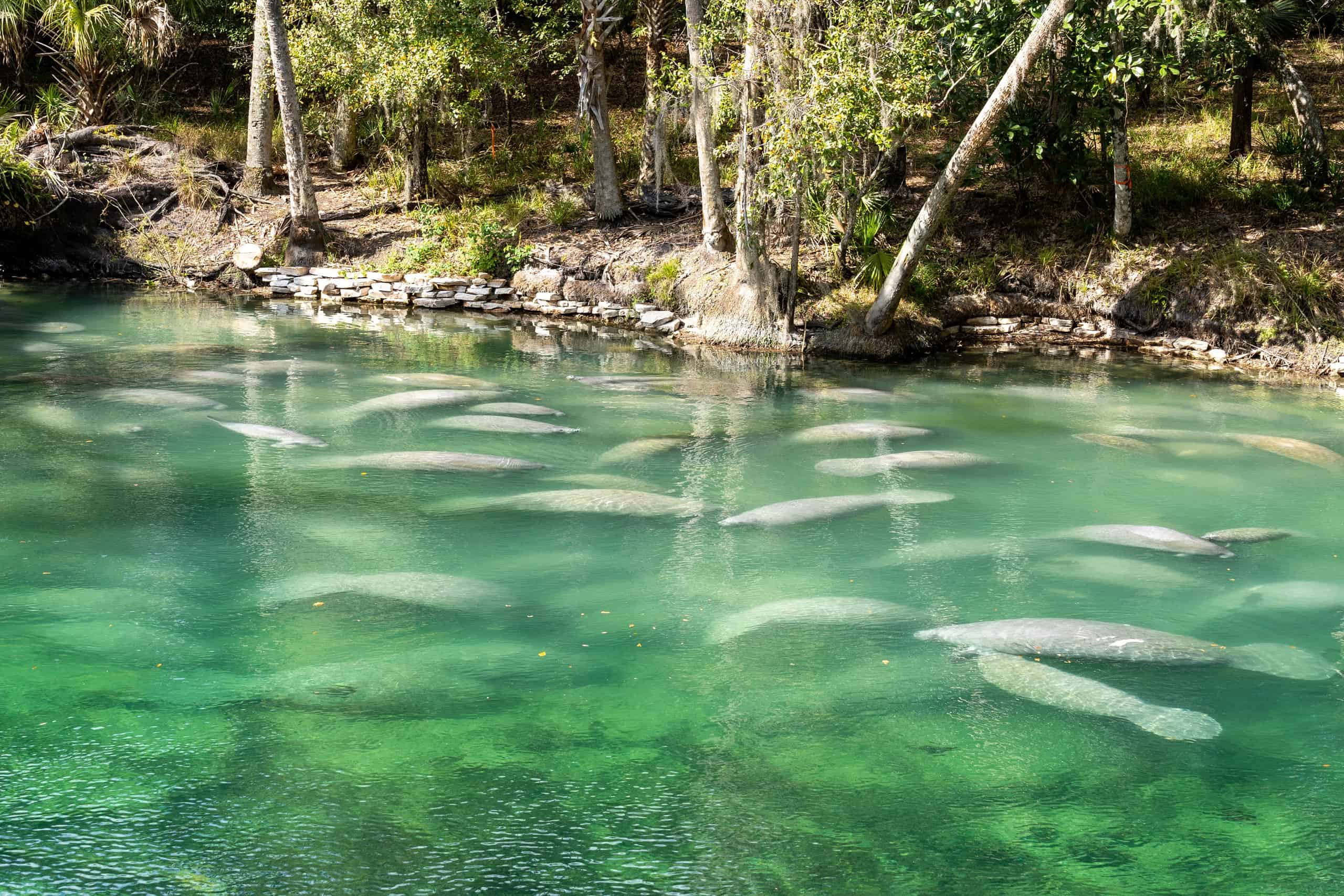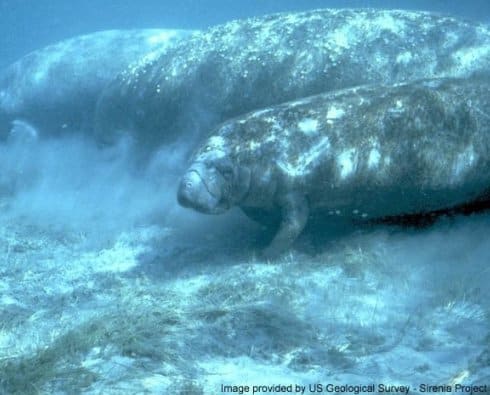Within the United States, Florida is the only state for viewing manatees in the winter. Generally, starting in December, these docile mammals reside primarily on Florida’s Eastern Coast. Residing in this area until around March, they can be found in warm-water sites, including power plant discharge canals and artesian springs.
Manatees are friendly and curious and aren’t too shy to approach humans, providing some great photo opportunities. Swimming and kayaking near them is allowed, but touching or harassing the manatees is not permitted.
These gentle giants are kayakers’ friends and a favorite mammal of snorkelers and swimmers. Here are eight places to view manatees during the winter months.
8. Homosassa Springs Wildlife State Park

Visitors can view the manatees in three different locations throughout the state park.
©gary powell/Shutterstock.com
A great location to view and learn about manatees is this Florida state park. There are daily manatee programs offered at 11 a.m. and again at 1 p.m.
In addition to the elevated boardwalks, the Fish Bowl underwater observatory allows for up-close views of the manatees as they swim by. Additionally, there is a live-feed TV screen on the sundeck that provides underwater views.
7. Weeki Wachee Springs State Park

A peaceful kayak trip could lead to one or more manatee sightings.
©Danielle Leonard/iStock via Getty Images
Near the Spring Hill area, the manatees are at Weeki Wachee year-round. Yet, wintertime is still the season that they favor, due to the warm spring waters.
A unique way to spot manatees and possibly see them up close is from the seat of a rented kayak. Watch in amazement as these gentle giants possibly swim beside or underneath your kayak.
6. Edward Ball Wakulla Springs State Park

Wakulla Springs State Park is one of the world’s largest and deepest freshwater springs.
©iStock.com/Ruth Peterkin
Manatees reside year-round within this state park but are most commonly spotted from October to January. There are plenty of other wildlife living in the river corridor and other areas of the park. Guests taking the riverboat cruise will be able to gain clear views of birds, gators,
This state park is open year-round, from 8:00 a.m. until sundown. There is a flat rate of $6 per vehicle to enter the park.
5. Merritt Island National Wildlife Refuge

Situated in the Indian River Lagoon, 1/3 of the nation’s manatees either live at this national wildlife refuge year-round or migrate through during the winter.
©iStock.com/Thomas_Kelley
In Titusville, part of the Space Coast, this wildlife refuge is an impressive 140,000 acres. Plenty of wildlife, plants, and birds can be found throughout the refuge, as well as manatees year-round.
In fact, there is a manatee viewing deck on Haulover Canal that provides a good chance of seeing a manatee or two on the move. Another place to view them is the Bairs Cove Boat Ramp, as they can be seen sometimes in the nearby cove.
4. Blue Spring State Park

The Boardwalk provides views of the numerous manatees within Blue Spring State Park.
©JHVEPhoto/Shutterstock.com
Just outside of Orlando, Blue Spring State Park is a popular location for watching the manatees. Although swimming is prohibited during the winter season, kayaking is allowed in certain areas. The boardwalk is a great place to view the manatees, and it’s recommended to arrive early in the morning. The manatees head to the St Johns River later in the day, plus arriving early will help avoid the crowds.
3. Tampa Electric Power Plant

The boardwalk at the Big Bend Power Station provides clear views of the manatees.
Just outside of Tampa, the Big Bend Power Station at Apollo Beach is a prominent spot for manatee sightings. The warm waters in this man-made source offer the manatees a refuge from cold water.
Not long after manatees started migrating here, the Manatee Viewing Center was opened and currently operates from November 1st to April 15th, from 10:00 a.m. until 5:00 p.m. After visiting the education center to learn about manatees, guests can stroll down the boardwalk to see the manatees firsthand.
2. Three Sisters Springs

Guests to the Three Sisters Springs can kayak or swim beside the manatees.
©tobiasfrei/iStock via Getty Images
The small town of Crystal River is famous for its manatee sightings. Situated about two hours from both Orlando and Tampa, this crystal-clear spring is probably the most popular location for manatee sightseeing opportunities.
On the coldest days, visitors can expect to see at least 200 manatees. Crystal River is one of the only locations that allows visitors to swim with manatees within the state of Florida. Kayak, snorkel, or swim beside the giants. Or, for those land lovers who wish to view the manatees, there is a boardwalk that runs along the edge of the spring.
1. Hunter Springs

Just a few miles from Crystal River, Hunter Springs allows year-round swimming.
©Lukasz Machowczyk/Shutterstock.com
For those who want to swim with the manatees in winter as well as summer, Hunter Springs is the perfect place. Just a few miles from Three Sisters Springs in Crystal River, this place is a lot less packed.
Rent a kayak from Three Sisters and enjoy a quick, 20-minute paddle to Hunter Springs. Spend the afternoon in their swimming area and see how many manatees swim by.
The photo featured at the top of this post is © A Cotton Photo/Shutterstock.com
Thank you for reading! Have some feedback for us? Contact the AZ Animals editorial team.







